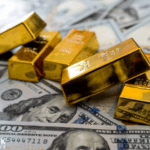Toyota Chairman Akio Toyoda stirred up discussions with his recent public appearance at a Japanese race event. The attention wasn’t due to the event itself but due to his attire that featured a “Make America Great Again” hat alongside a shirt featuring former U.S. President Donald Trump and Vice President JD Vance. This fashion choice comes at a time when Toyota plans a nearly $1 billion investment in U.S manufacturing. Observers speculated various meanings behind the outfit, considering recent U.S. tariffs have affected Toyota financially.
In previous instances, Toyoda has maintained a neutral public persona, focusing primarily on automotive innovation and market expansion rather than political statements. His decision to visibly associate with Trump’s ideological symbol is a marked shift from his earlier stances. Yet, Toyota continues with its investments in the U.S., responding perhaps to market conditions under increasingly complex trade difficulties.
Why Did Toyoda Wear the Controversial Attire?
Toyoda’s choice of apparel could be interpreted as a gesture towards improving relationships with the U.S. administration, which has imposed tariffs impacting Toyota’s financial health. This move may indicate a strategic positioning to bolster Toyota’s interests in America. Meanwhile, George Glass, the U.S. ambassador to Japan, acknowledged Toyoda’s participation, joining him in an iconic Ford F-150 for a demonstration, highlighting industrial diplomacy at play.
What Impact Do Tariffs Have on Toyota?
Current U.S. tariffs notably pressurized Toyota’s finances, causing a reported $3.3 billion decrease in the company’s operating income compared to the previous fiscal period. Despite the U.S. reducing tariffs from 27.5% to 15% on Japanese imports, the auto giant continues to grapple with significant cost burdens. These financial pressures emphasize the interdependencies between international trade policies and corporate strategies.
“The photo opportunity was intended to underscore our company’s support for efforts that strengthen U.S. industry,” Toyota commented, sidestepping direct mention of Toyoda’s attire.
As Toyota progresses with a $912 million investment to create jobs across several U.S. states, discussions on the intersection of political attitudes and business decisions remain sparked by this incident.
Many automakers align themselves with the prevailing political climate, evidenced by Toyota’s substantial political donations and numerous investments in pro-Trump regions. The automotive sector’s trajectory suggests an increasing necessity to navigate political waters, especially given the current tariffs’ challenges.
Beyond the attire’s emerging narrative, the automotive landscape reveals the complex interplay of business logistics and political affiliations. As Toyota navigates these dynamics, further actions both in fashion statements and strategic movements continue being closely watched.
“We are exploring ways to make tariffs a winner for everyone. The people we want most to be winners are our customers,” Toyoda mentioned, illustrating the delicate balance Toyota seeks in the evolving international market.
While economic implications are palpable, these industry leaders inherently display how political climates significantly influence crucial corporate decisions. By understanding these layers, stakeholders, consumers, and analysts can glean a comprehensive picture of future industry trends.










